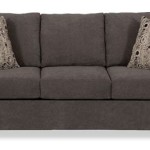The Enduring Elegance of the Old Style Sofa Settee
The old style sofa settee, often envisioned with its gracefully curved lines, button-tufted upholstery, and ornately carved legs, represents a timeless aesthetic that continues to captivate designers and homeowners alike. Far from being relegated to antique shops and period films, the old style sofa settee frequently finds its place in modern interiors, acting as a focal point of elegance, comfort, and visual interest. This article explores the defining characteristics of the old style sofa settee, examining its historical roots, construction techniques, and enduring appeal in contemporary design.
The term "old style" encompasses a broad range of periods and design movements. Pieces labeled as old style sofa settees often draw inspiration from the Victorian era, the Edwardian period, or even earlier influences like the Rococo and Neoclassical styles. Each of these periods contributed distinctive elements that are frequently incorporated into the design of these settees. Understanding these influences is crucial for appreciating the nuances and variations within the old style category.
Victorian settees, for example, are typically characterized by their deep button tufting, scrolled arms, and elaborately carved wooden frames. They often feature rich fabrics like velvet, damask, or brocade, reflecting the opulence and grandeur of the era. In contrast, Edwardian settees might exhibit a lighter, more streamlined aesthetic, with less emphasis on heavy ornamentation and a greater focus on comfort and practicality. These differences highlight the importance of careful examination when considering an old style sofa settee to ensure it aligns with one's specific design preferences and the overall aesthetic of the room.
Key Features of Old Style Sofa Settees:
Several features commonly define the old style sofa settee, setting it apart from more contemporary designs. These characteristics contribute to its distinctive appearance and its enduring appeal.
1. Upholstery and Detailing: The hallmark of many old style sofa settees is their intricate upholstery. Button tufting, where fabric is pulled into diamond or square shapes and secured with buttons, is a prevalent technique. This not only adds visual texture but also contributes to the overall comfort of the seating. The fabric itself plays a significant role in defining the style. Velvet, with its luxurious sheen and soft texture, is a popular choice, as are damask and brocade, which feature woven patterns that add depth and visual interest. Piping and nailhead trim are also frequently used to accentuate the curves and lines of the settee, adding a touch of refinement.
Beyond the fabric and tufting, the detailing on an old style sofa settee often extends to decorative elements such as fringe, tassels, and ornate gimp trim. These details, while seemingly minor, contribute to the overall sense of luxury and craftsmanship that defines the style. The choice of trim and embellishments should complement the fabric and the overall design of the settee, creating a cohesive and visually appealing piece.
2. Frame and Leg Design: The frame of an old style sofa settee is typically constructed from solid hardwood, such as oak, mahogany, or walnut. These woods are chosen for their strength, durability, and ability to be carved and shaped. The legs of the settee are often elaborately carved, featuring motifs such as cabriole legs (S-shaped legs that curve outward at the knee and inward at the ankle), claw feet, or ball-and-claw feet. These details are crucial in defining the overall style and character of the piece.
The shape of the frame itself is also significant. Many old style settees feature a serpentine or camelback design, with a curved back that adds visual interest and elegance. The arms of the settee may be scrolled or rounded, further enhancing the overall aesthetic. The frame is not merely a structural element but an integral part of the design, contributing to the overall visual appeal of the piece.
3. Construction Techniques: The construction of an old style sofa settee typically involves traditional techniques that emphasize durability and longevity. Frames are often joined using mortise-and-tenon joints, which are strong and resistant to stress. Springs are frequently hand-tied, providing superior support and comfort compared to modern coil systems. The upholstery is often applied by hand, with meticulous attention to detail to ensure a smooth and even finish. These traditional construction methods contribute to the superior quality and durability of old style sofa settees.
The use of high-quality materials is also paramount in the construction of an old style sofa settee. Solid hardwood frames, premium fabrics, and durable springs ensure that the piece will withstand years of use. The attention to detail and craftsmanship that goes into the construction of these settees is evident in their overall quality and longevity.
Integrating Old Style Sofa Settees into Modern Interiors:
While old style sofa settees may appear to be relics of the past, they can be seamlessly integrated into modern interiors, adding a touch of elegance and sophistication. The key is to balance the traditional elements of the settee with the contemporary features of the room.
One approach is to use the settee as a focal point in a minimalist space. A richly upholstered Victorian settee can stand out dramatically against a backdrop of clean lines and neutral colors. This creates a striking contrast that highlights the beauty and craftsmanship of the settee.
Another approach is to mix and match old and new elements. Pairing an old style settee with contemporary artwork, lighting fixtures, and accessories can create a visually interesting and eclectic space. The contrast between the traditional and the modern can add depth and personality to the room.
Consider the scale of the settee in relation to the size of the room. An oversized Victorian settee may overwhelm a small space, while a smaller Edwardian settee may be more appropriate. Choose a settee that is proportioned to the room and complements the other furniture.
Caring for an Old Style Sofa Settee:
Preserving the beauty and integrity of an old style sofa settee requires proper care and maintenance. Regular cleaning is essential to prevent dust and dirt from accumulating on the fabric. Vacuuming the settee regularly with an upholstery attachment can help to remove surface dirt. Spot cleaning stains immediately with a mild detergent and water can prevent them from setting.
Professional cleaning is recommended periodically to deep clean the upholstery and remove ingrained dirt. It is important to choose a cleaning service that specializes in antique or delicate fabrics to avoid damaging the settee. Avoid using harsh chemicals or abrasive cleaners, as these can damage the fabric and finish.
Protecting the settee from direct sunlight is also important to prevent fading and discoloration. Consider placing the settee away from windows or using curtains or blinds to filter the sunlight. Regular maintenance and proper care will help to ensure that the old style sofa settee remains a cherished piece for years to come.
The Enduring Appeal:
The enduring appeal of the old style sofa settee lies in its timeless elegance, craftsmanship, and ability to evoke a sense of history and tradition. Unlike mass-produced furniture, these settees often possess unique details and characteristics that reflect the skill and artistry of the craftsman who created them. Their sturdy construction and high-quality materials ensure that they will last for generations, becoming cherished heirlooms that are passed down through families.
In an era of disposable furniture, the old style sofa settee represents a commitment to quality and longevity. It is a testament to the enduring value of craftsmanship and the beauty of traditional design. Whether used as a focal point in a modern interior or as a centerpiece in a period-style room, the old style sofa settee is sure to add a touch of elegance and sophistication to any space.
The sofa settee's contribution to the aesthetic is undeniable. It provides a narrative and atmosphere of comfort and luxury that can be difficult to achieve with contemporary pieces. The attention to detail, from the meticulously carved legs to the carefully chosen fabric, speaks to a level of artistry and craftsmanship that is often absent in modern furniture design.

Antique Style Wooden Sofa Set Living Room

Victorian Vintage Style Tufted Living Room Sofa Set Dst Home Furniture Manufacturer Exporter

Rectangular 3 Seater Wooden Antique Style Sofa Set For Home

Antique Style Teak Wood Wooden Sofa Set

Ke Antique Design Sofa Set Hall

Vintage Style Wooden Sofa Set With Coffee Table Antique Furniture S In Cochin

Vintage Wooden Sofa Set

Advika Handicraft Antique Sheesham Solid Wood Sofa Set Wooden Living Room Furniture 2 1 With 4 Stool Center Table Fabric

Antique Sofa Settee French Louis Xv Style Walnut Salon Striped Floral 1800 S Old Europe Home Furnishings

Antique Couch Google Search Vintage Style Sofa








